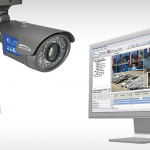The first generation of wireless communication was of analog type technology. In this technology, a signal can be modulated to a higher frequency for transmission from a mobile device to another through a base station. There are different types of standards that were built for the various regions. Total Access Communication System (TACS) for the UK, Nordic Mobile Telephone (NMT) for the Eastern Europe and Advanced Mobile Phone System (AMPS) for the US are some of them.
In the 1990’s, the General System of Mobile Communication (GSM) technology was established. This was the second generation (2G) of digital communication system and it was considered a milestone in the wireless technology. It not only made communication over longer distances possible but, easier as well. GSM allowed people to exchange voice calls and SMS (Short Messaging System) through a mobile device. Reliability coupled with low costs was something that almost anybody could afford.
With the development of wireless technology, the GPRS (General Packet Radio Service) was introduced in the 1990’s. This was the beginning of internet connectivity through wireless communication. People demanded better bit rates for faster transfer of information. Thus, EDGE( Enhanced Date Rate for Global Evolution) was introduced.
In the summer of 2000, 3GPP (3G Partnership Program) was given the charge of the research and development of the third generation (3G) wireless technology. It allowed video calling at an improved rate of up to 384kbps. The development of HSDPA (High Speed Download Packet Access) offered internet speed of 14.4Mbps on a mobile phone.
In the last two decades, there has been a lot of development in mobile technologies and its usage. Mobiles have become an integral part of our lifestyle and such developments are of great boon.





